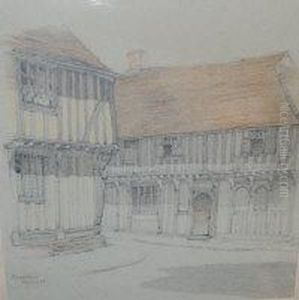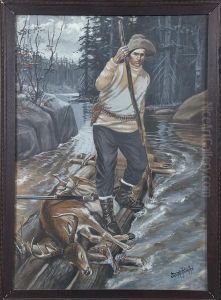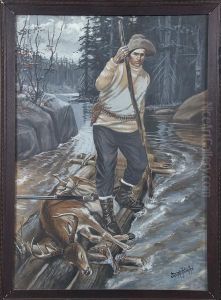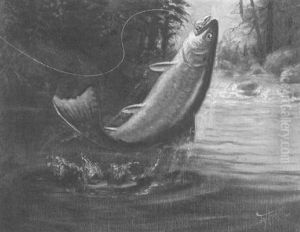Joseph Edward Knowles Sr. Paintings
Joseph Edward Knowles Sr. was an American artist, illustrator, and writer born in February 1869 in Deer Isle, Maine. He was most famously known for his experiment in survival, during which he lived in the woods of Maine without any tools or supplies to demonstrate his ability to survive solely by his knowledge of nature. This experience became a significant part of his identity and contributed to his fame in the early 20th century.
Knowles grew up with a deep appreciation for the outdoors, and this love for nature heavily influenced his work and life. He began his career as an illustrator, creating drawings for various publications, and his artwork often featured outdoor scenes and wildlife, reflecting his personal interests and experiences.
In 1913, Knowles decided to put his survival skills to the test. He entered the woods of Maine naked and without any supplies, vowing to survive for two months. He emerged from the woods 60 days later, clothed in furs and carrying a variety of tools and weapons he had crafted himself from natural materials. His story made national headlines, and he was celebrated as a real-life Tarzan. This event was heavily covered by the Boston Post, and it made him a celebrity of his time.
Capitalizing on his newfound fame, Knowles wrote two books about his experiences: 'Alone in the Wilderness' (1913) and 'The Book of Camping and Woodcraft: A Guidebook for Those Who Travel in the Wilderness' (1914). These publications further solidified his reputation as an authority on wilderness survival and living off the land.
Despite the fame that came from his wilderness experiment, Knowles continued his work as an illustrator and artist. His illustrations were characterized by their attention to detail and their reflection of his extensive knowledge of the wild. Throughout his life, Knowles contributed to the cultural dialogue about the relationship between humans and nature.
Joseph Edward Knowles Sr. passed away in 1942, but his legacy lived on through his art, writings, and the romantic notion of man's ability to coexist with nature. His work remains an interesting footnote in the history of American art and culture, particularly within the context of the early 20th century when industrialization was rapidly transforming the American landscape and way of life.



